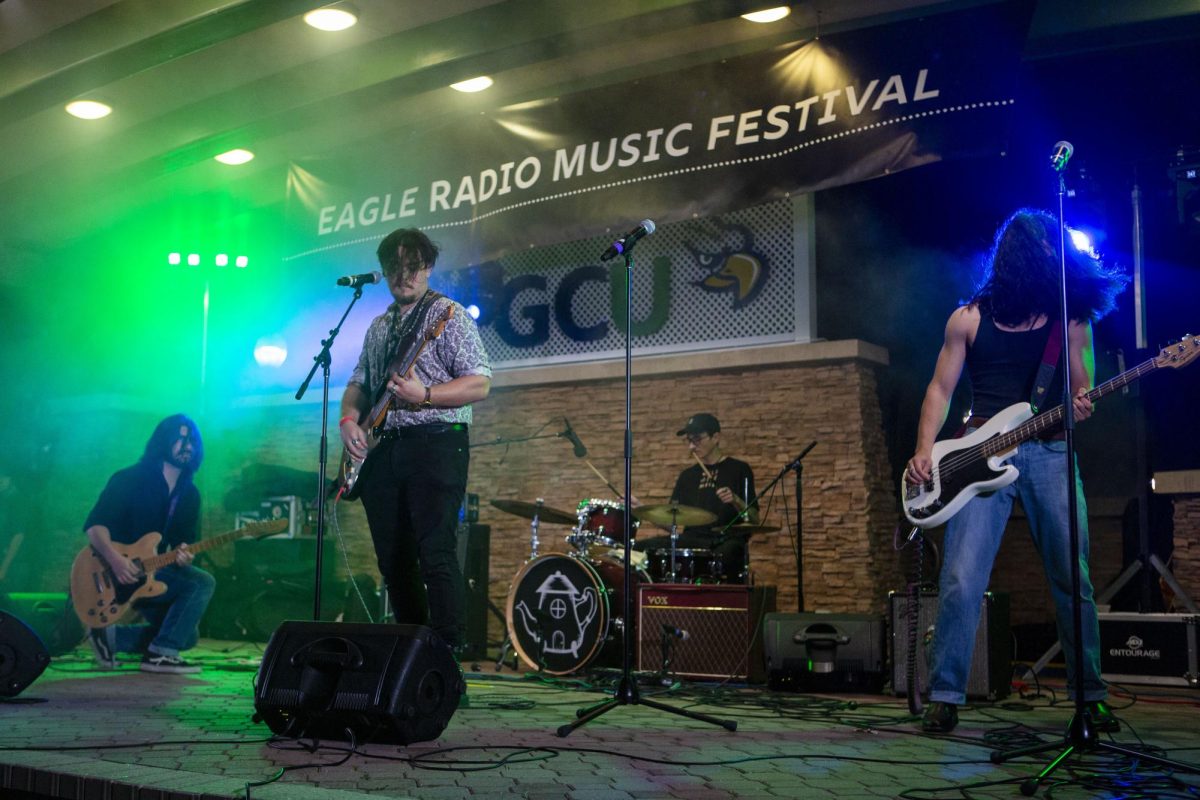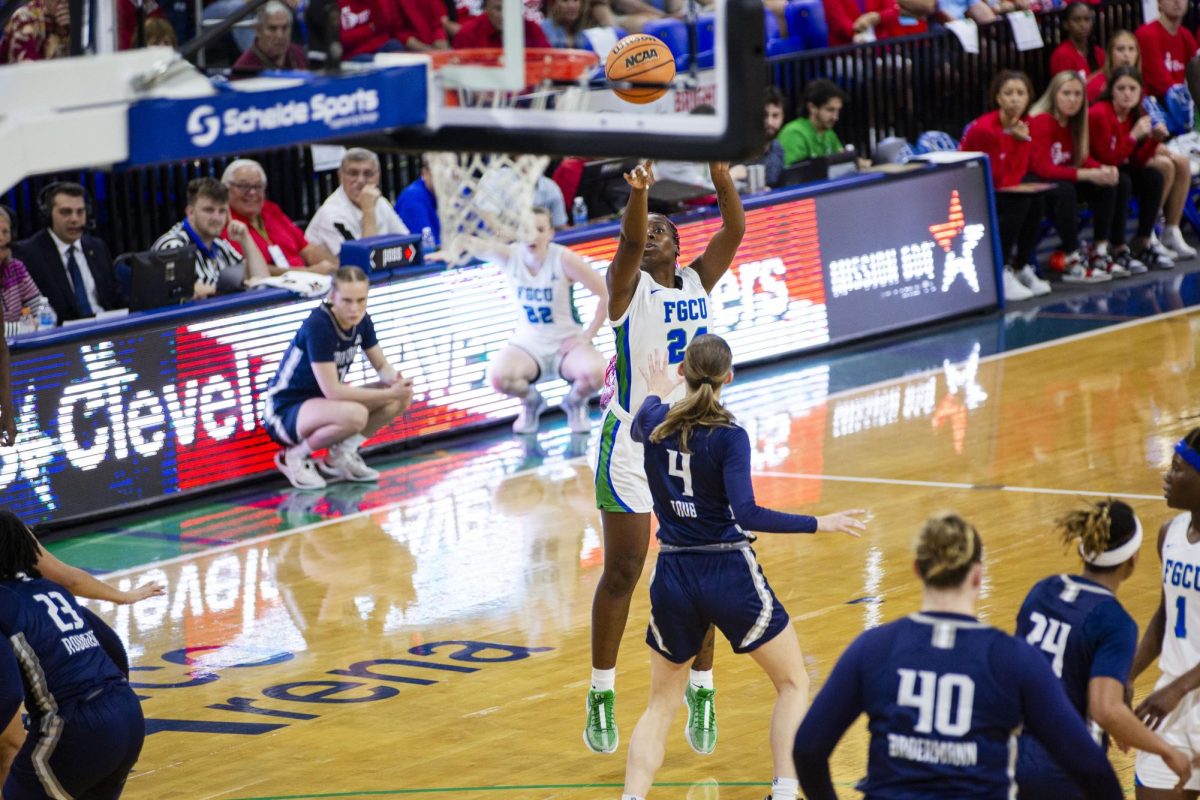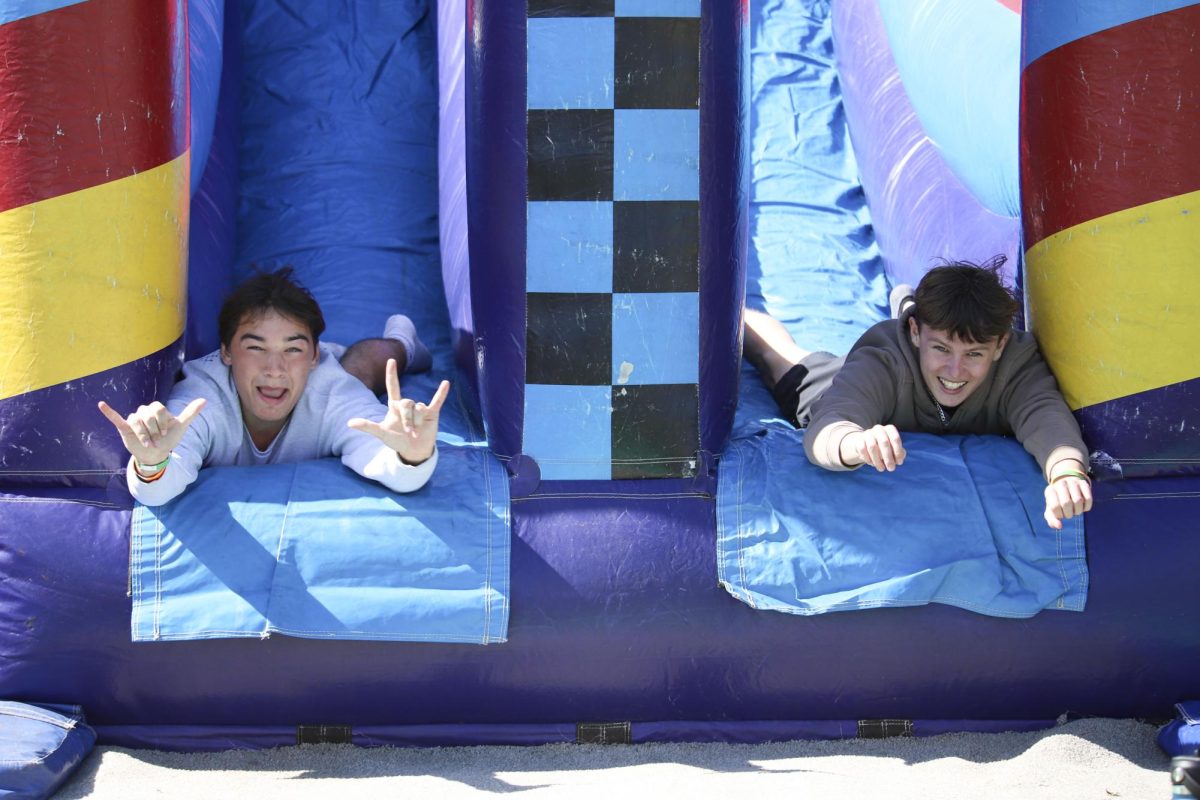On March 9, Dr. Harry Maisch and two FGCU students, senior Connor Bapst and junior Mikey Ryan, embarked on a 17-hour road trip to Conway, Arkansas. This trip took this FGCU trio to the South-Central Section Meeting of the Geological Society of America (GSA) to present research they had been conducting on glacial boulders from the last Ice Age.
Dr. Maisch has been studying glacial boulders found in his home state of New Jersey for about a decade and brought elements of this research to FGCU in 2022 with Bapst and Ryan.
During the last Ice Age, large ice sheets covered much of the northern U.S. Within these ice sheets were many rock fragments that were slowly transported southwards as the ice moved. When these ice sheets began to melt and retreat back to the north as the climate warmed, the rocks they contained were left behind in new locations, far from their source, as glacial boulders.
The boulders that were the focus of their study have a distinct lithology and consist of white quartz pebbles that appeared similar to a unique rock outcrop located over 60 miles to the north in central New York. To determine if these boulders derived from this outcrop of rock, the team compared the mineral composition of these glacial boulders with rocks from the source outcrop in New York – it was a perfect match.
“It was a research project that I started a while ago with my colleague and we wanted to try to move it along. Connor and Mikey helped me work on that,” Dr. Maisch said.
After compiling their results for a poster presentation, the three traveled to the GSA conference in Arkansas to present their research on the unique geologic history of these rocks. This was FGCU’s first time presenting at the South-Central Section Meeting of the Geological Society of America, and FGCU was the only university from Florida represented at this conference.
Ironically, the research that Bapst, Ryan and Maisch presented was based on samples from northern New Jersey and central New York, which are also not located in the South-Central region of the U.S.
“It’s a little out there for me, I’m not very academically geology oriented, but it’s just something I was interested in,” Bapst said. “It was good to get out there, see the conference and kind of learn about a lot of different topics that are very different from Florida geology.”
After the conference, the team spent three days completing field work at a nearby and unique Cretaceous-Paleogene boundary location. The Cretaceous-Paleogene (K-Pg) boundary marks the most well-known mass extinction event in Earth’s history that occurred ~66 million years ago and led to the extinction of the dinosaurs and large marine reptiles among many other organisms.
Here, they were able to collect numerous fossil remains from extinct species of sharks, stingrays, fish, turtles, marine reptiles including plesiosaurs and mosasaurs and invertebrates including ammonites (extinct ancestor to the modern nautilus). This K-Pg boundary site in Arkansas and the unique fossils it contains have been another one of Maisch’s research areas and he plans to continue studying this material with Bapst, Ryan and other FGCU students.
“There’s all sorts of cool stuff up there in Arkansas, I didn’t really expect that. I didn’t expect to move 2,000 pounds of rock in a week, upriver,” Ryan said.
To wrap up the groups’ conference and fieldwork endeavors, this FGCU trio visited a quarry located near Mt. Ida, Arkansas to explore different geology and collect quartz crystals. To end their exciting, memorable and action-packed trip, the FGCU team carefully packed their hard-earned fossil and mineral specimens and began the 17-hour drive back to FGCU. If given the chance, they would do it all again tomorrow.
“Something I want to stress is that you guys [Bapst and Ryan] are not geology majors,” Dr. Maisch said. “But we’re still able to work together because there’s a lot of ways to become involved in my research.”
The two students have worked alongside Dr. Maisch long-term to meet their service-learning requirement and have found a life-long hobby within it.






























